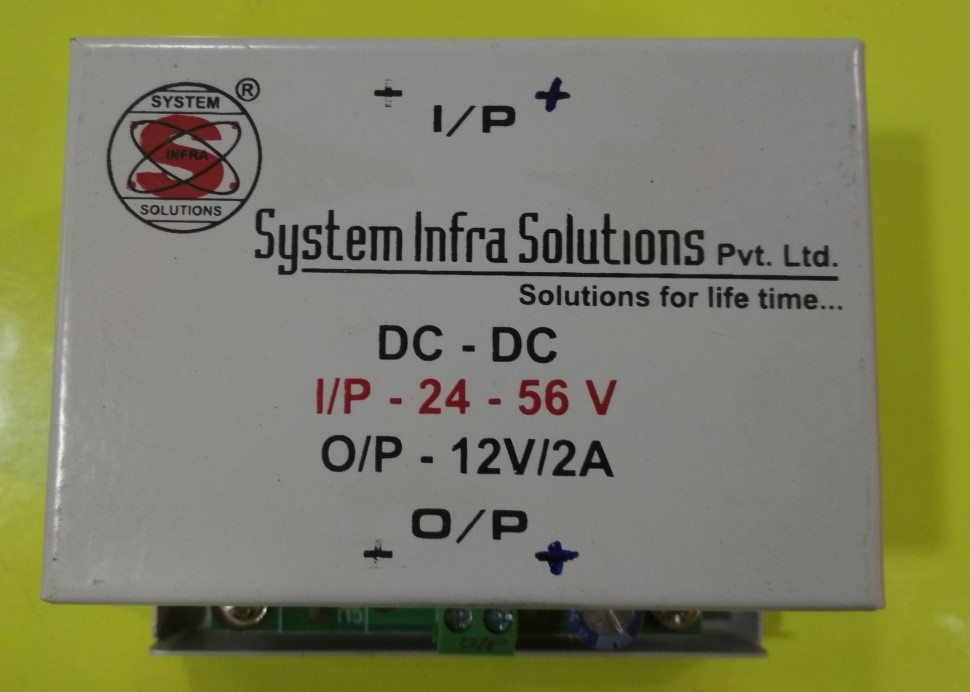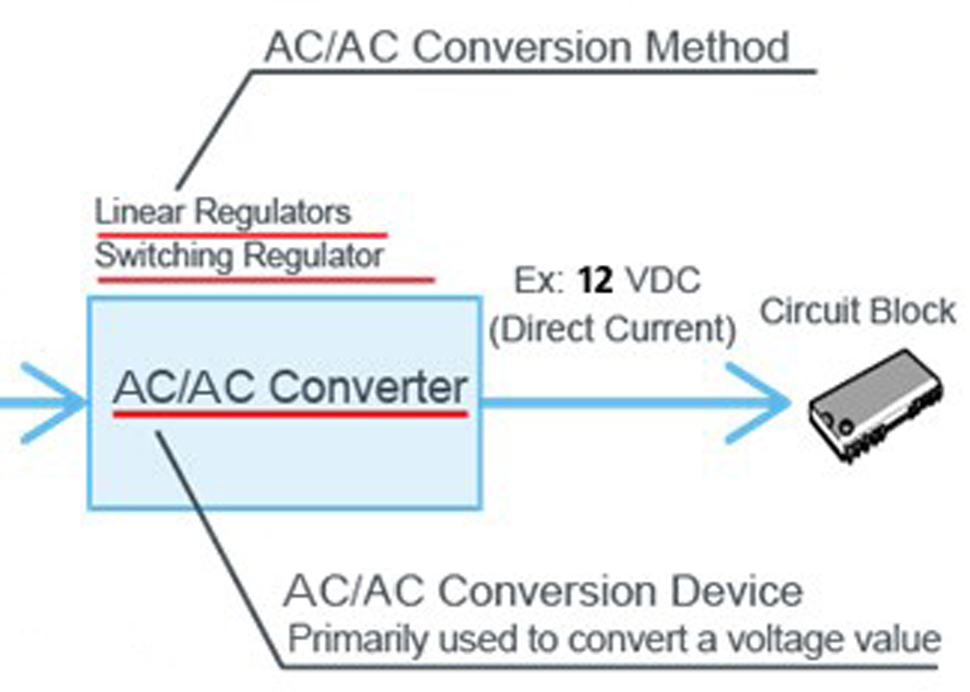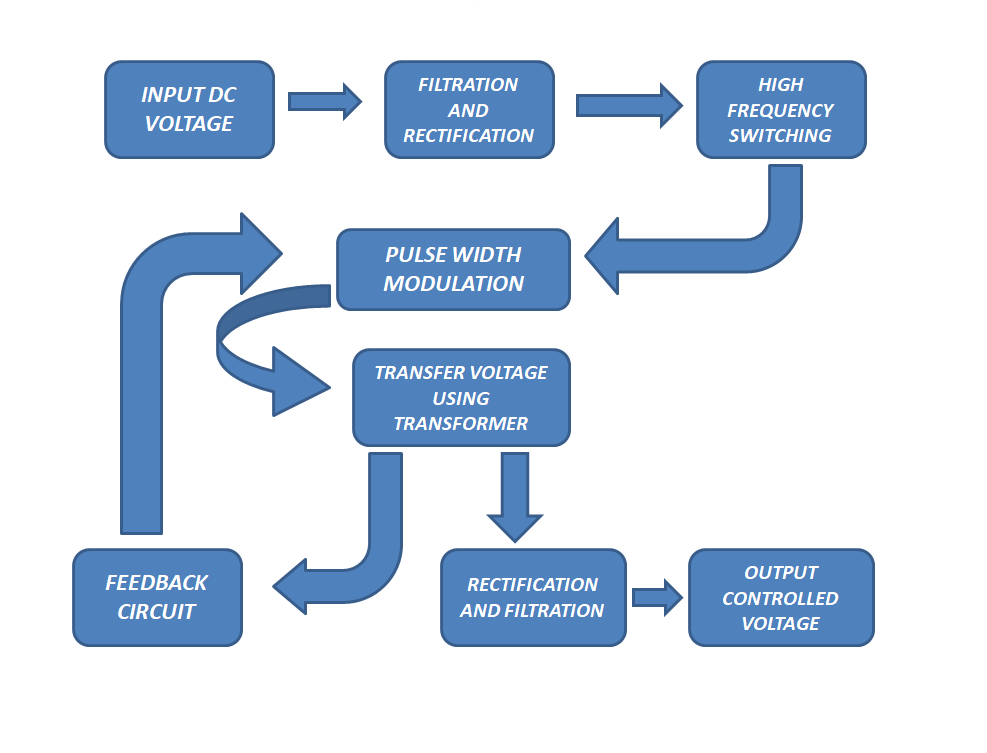DC To DC And AC To AC Converter Photograph


DC to DC converter takes the voltage from a DC source and converts the voltage of supply into another DC voltage level. They are used to increase or decrease the voltage level.
Some devices need a certain amount of voltage to run the device. Too much of power can destroy the device or less power may not be able to run the device. The converter takes the power from the battery and cuts down the voltage level, similarly a converter step-up the voltage level. For example, it might be necessary to step down the power of a large battery of 48V to 12V to run a Controller and to handle the load between 1 to 3 Amp.
DC-to-DC techniques that use transformers or inductors work at much higher frequencies, requiring only much smaller, lighter, and cheaper wound components. Consequently these techniques are used even where a Main’s transformer could be used; for example, for domestic electronic appliances it is preferable to rectify Main’s voltage to DC, use switch-mode techniques to convert it to high-frequency AC at the desired voltage, then, usually, rectify to DC. The entire complex circuit is cheaper and more efficient than a simple mains transformer circuit of the same output.
Linear or Switching Regulators
DC-DC converters are also referred to as linear or switching regulators, depending on the method used for conversion.

Specifications Of DC To DC Converter
| INPUT VOLTAGE | 60VOLT (MAX) | 42VOLT (MIN) |
|---|---|---|
| OUTPUT VOLTAGE | 18 VOLT (MAX) | 12 VOLT (MIN) |
| LOAD CURRENT | 3 AMP (MAX) | 1 AMP (MIN) |
Features
- REPETITIVE AVALANCHE RATED
- FAST SWITCHING
- HIGH THERMAL CYCLING PERFORMANCE
- LOW THERMAL RESISTANCE
Advantages of DC Converter
- Battery space can be reduced by reducing or increasing the available input voltage.
- A device can be driven by bucking or boosting the available voltage. Thus preventing the damage of the device or breakdown.
Functional Flow Chart


